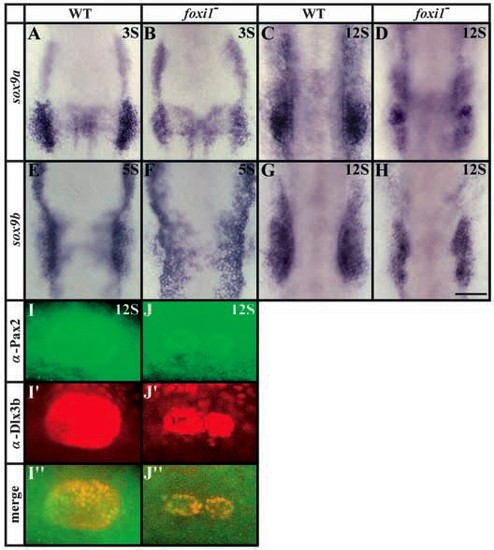
Foxi1 is required for patterning of otic precursors. The expression pattern of sox9a (A-D), sox9b (E-H), Dlx3b and Pax2 (I,J) are perturbed in foxi1- mutants. At the three-somite stage, sox9a expression is strong in cells of the future otic placode in wild-type embryos (A) but severely reduced in foxi1- mutants (B). At the 12- somite stage, sox9a is expressed throughout the otic placode in wild-type embryos (C) in contrast to foxi1- mutants of the same age that have only a few cells expressing sox9a (D). (E-H) Loss of foxi1 affects sox9b differently. At the five-somite stage, sox9b expression is reduced in the preotic region in foxi1- mutants (F) compared with wild-type embryos (E) but by the 12-somite stage, sox9b expression in foxi1- mutants has recovered (H), although not to wild-type levels (G). (I-J′) Dlx3b and Pax2 proteins coincide in the otic region. In wild-type embryos at the 12-somite stage, Dlx3b and Pax2 are co-expressed in cells throughout the otic placode (I-I′′). The overlapping pattern is also present in foxi1- mutants at this stage (J-J′′) showing that expression of one correlates with expression of the other. (A-H) Dorsal views, anterior towards the top; (I-J′) side views, anterior towards the left, dorsal towards the top. Scale bar: 120 μm for A-H; 50 μm for I,J.
|

